To find a place to store spent nuclear fuel, Congress needs to stop trying to revive Yucca Mountain
By David Klaus | April 30, 2024
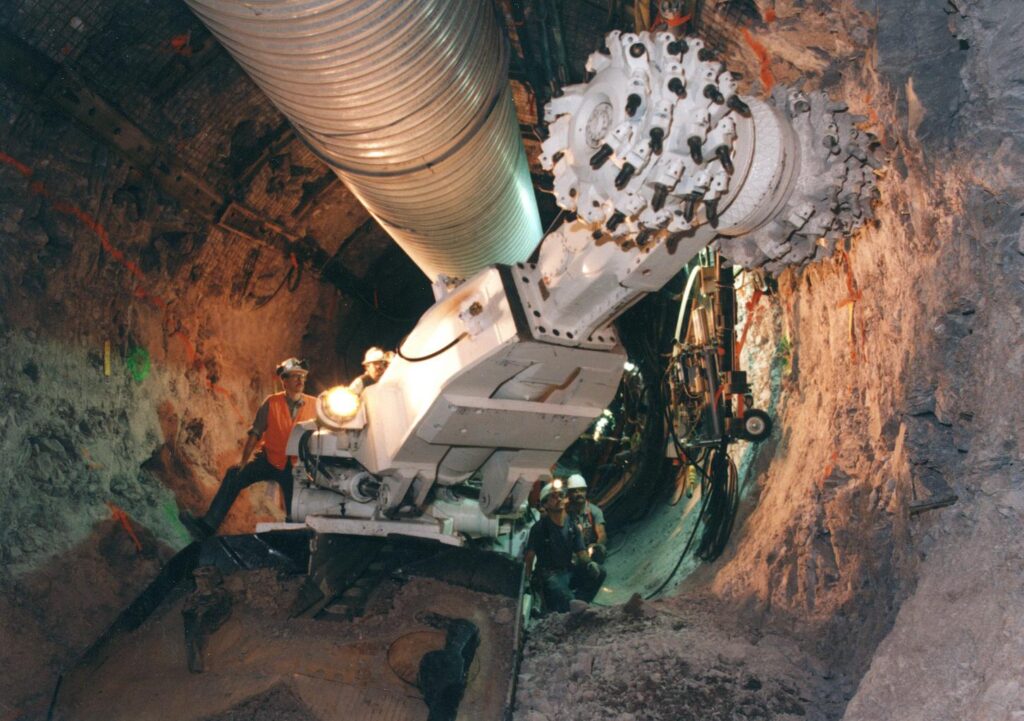 A mining machine excavates alcoves and niches for exploratory scientific testing in September 2013 at Yucca Mountain. Thousands of studies of the site's geology, hydrology, chemistry and climate to determine Yucca Mountain's suitability as the nation's first repository for commercial spent nuclear fuel. The project has stalled since the Obama administration attempted to withdraw the license application of the Yucca Mountain project in 2010. (Credit: US Energy Department, via Flickr)
A mining machine excavates alcoves and niches for exploratory scientific testing in September 2013 at Yucca Mountain. Thousands of studies of the site's geology, hydrology, chemistry and climate to determine Yucca Mountain's suitability as the nation's first repository for commercial spent nuclear fuel. The project has stalled since the Obama administration attempted to withdraw the license application of the Yucca Mountain project in 2010. (Credit: US Energy Department, via Flickr)
A recent congressional hearing strangely resembled the film Groundhog Day. The hearing—titled “American Nuclear Energy Expansion: Spent Fuel Policy and Innovation”—not only rekindled a decades-old debate about whether to recycle spent nuclear fuel from reactors; it also provided a platform to relive yet again the fantasy that somehow the US government can resolve all of the political, legal, and technical issues necessary to build a permanent nuclear waste storage facility at Yucca Mountain, Nevada.
The Republican leadership of the House Committee on Energy and Commerce clearly supported one path forward for commercial spent fuel. In her opening remarks, committee chair Cathy McMorris Rodgers, a Republican from Washington state, urged the committee to “update the law and build state support for a permanent repository at Yucca Mountain.” In his own opening remarks, Jeff Duncan, a South Carolina Republican and chair of the subcommittee hosting the hearing, lamented that “[u]nfortunately, the political objections of one state, NOT based on scientific reality, blocked the [Yucca Mountain] repository from being licensed and constructed.” Yucca Mountain was a recurrent theme in witness testimony and congressional questioning throughout the hearing.
But to really advance federal policy and innovation on spent nuclear fuel, Congress needs to learn the lessons of Yucca Mountain and to stop trying to revive it.
In the 2020 presidential campaign, Donald Trump and Joe Biden agreed there shouldn’t be an underground repository to permanently store nuclear waste at Yucca Mountain in Nevada, and that it was time for everyone else to accept that the project was finally off the table. As was the case four years ago, it is very unlikely the next administration, be it led by President Biden or President Trump, is going to reverse its position and attempt to revive a multibillion-dollar infrastructure project that has been dormant for over a decade.
Even if support were to emerge at the federal level, attempting to obtain permits for the facility would create an extraordinary legal and regulatory morass. The state of Nevada alone had filed over 200 objections to the Yucca Mountain construction and operating permits that the Nuclear Regulatory Commission (NRC) was considering before the process for considering them was suspended in 2011.
If the process were revived and those objections (or contentions, in NRC terminology) were somehow adjudicated in favor of the project, the state and other opponents would turn their attention to required NRC certification of transportation casks, emergency plans, evacuation routes, safety procedures, and operator training programs. Beyond these requirements, the project would have to acquire rights-of-way for the construction of an approximately 300-mile-long railroad and obtain a certification from the US Environmental Protection Agency of compliance with the National Environmental Policy Act and radiation-protection standards, as well as a host of other state and local approvals. Underlying these legal, regulatory, and political challenges are significant—and yet unresolved—technical issues associated with the repository design and the challenge of placing spent nuclear fuel canisters into a fractured rock formation located over a critical aquifer.
Beyond spent fuel disposal, the hearing dealt with the reprocessing of spent nuclear fuel to extract fissile material that might be made into new fuel. The subcommittee’s reprocessing discussion focused on proposals by two US nuclear startup companies, Oklo and Curio, which are developing projects to recycle high-assay low-enriched uranium (HALEU) from advanced reactors—that is, uranium that has more than five percent but less than 20 percent of the fissile uranium 235 isotope. The witnesses, including the director of the Idaho National Laboratory John Wagner, agreed that reprocessing used HALEU fuel could reduce the overall amount of radioactive material requiring permanent disposal. However, the clear consensus was that reprocessing would not make the spent fuel problem go away. Even if the United States goes forward with HALEU recycling, a permanent nuclear waste repository will be needed for defense waste and for most of the over 90,000 metric tons of commercial spent nuclear fuel now in storage at 75 sites across the United States.
Interestingly, Lake H. Barrett, the former principal deputy director for the Energy Department’s Office of Civilian Radioactive Waste Management, focused his testimony more on the importance of the federal-state relationship than the challenge of obtaining local consent for the construction of a nuclear waste storage facility. “The record is fairly clear that for the development of a significant federally purposed spent fuel waste facility, there is going to have to be an effective functional relationship with the host state in the United States.” As evidence, he cited the record of proposed nuclear waste facilities in Nevada, Tennessee, and Utah that failed in the face of state-level opposition, as well as the current opposition from Texas and New Mexico to proposed interim storage facilities in their respective states. State level officials consistently opposed the licensing and construction of these facilities, even though several were strongly supported by the local community.
The agreement between the federal government and the state of New Mexico that led to the development of the Waste Isolation Pilot Project (WIPP) illustrates how states and local communities can often differ in their support for a nuclear waste facility. The fundamental disconnect: Local communities directly benefit from the jobs and economic growth generated by a major infrastructure project, such as a nuclear waste disposal facility, but these benefits are not necessarily felt widely across the state and are not sufficient to overcome the inevitable political opposition from environmental and other local groups.
The legislation establishing WIPP—a geologic repository storing transuranic radioactive waste from nuclear weapons research and production—was enacted by Congress in 1992, only after it was amended to include payments of $20 million per year for 15 years to the state of New Mexico, as well as funding for the “Santa Fe Bypass”—a four-lane highway serving the politically liberal northern portion of the state, ostensibly built to avoid having trucks from nearby Los Alamos carrying nuclear waste travel through downtown Santa Fe.
Reaching agreements with a state and local community to site and develop a nuclear waste facility—be it a geologic repository or an interim surface storage site—will require strong commitment and leadership by the next administration. During the hearing, members of the subcommittee and witnesses all endorsed the current administration’s consent-based siting approach as a means to develop transparency and trust in selecting a site. But they also cautioned that siting an interim storage facility is unlikely to succeed until progress is made on a permanent disposal facility. Barrett further recommended that a “new independent dedicated waste management organization” be established outside of the Energy Department to oversee the siting process—a long-time recommendation made by several independent commissions of experts.
For spent nuclear fuel policy to make progress, Congress has an important role to play and the subcommittee hearing was certainly a step in the right direction. But if congressional leadership refuses to accept the reality that a repository at Yucca Mountain won’t happen under the current legislative and organizational framework, it will constantly move one step forward and two steps back. If Congress is serious about addressing the nuclear waste storage issue, its first move should be to repeal the provisions of the Nuclear Waste Policy Act that effectively mandate that the repository be located at Yucca Mountain and initiate a site-neutral, consent-based siting process for a permanent repository. Such new legislation could also remove—or modify—the ban on commercial recycling of spent fuel and facilitate the development of interim storage facilities as the process of siting and developing a permanent repository moves forward.
Together, we make the world safer.
The Bulletin elevates expert voices above the noise. But as an independent nonprofit organization, our operations depend on the support of readers like you. Help us continue to deliver quality journalism that holds leaders accountable. Your support of our work at any level is important. In return, we promise our coverage will be understandable, influential, vigilant, solution-oriented, and fair-minded. Together we can make a difference.



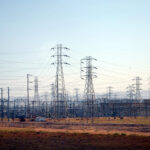
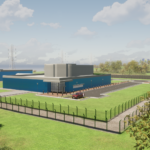
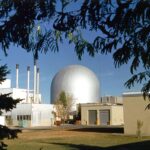



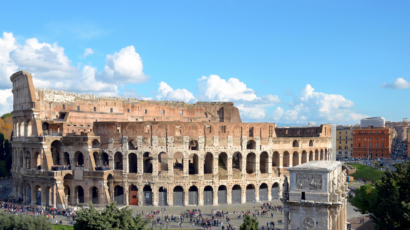

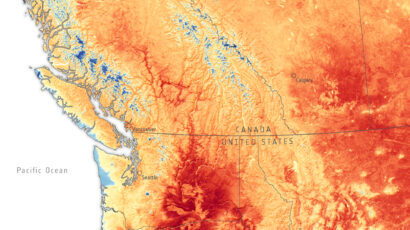



My understanding was that Yucca Mountain was to be sited below the water table, but you have indicated that it would have been above an aquifer. What’s the real story??
My dad worked for Westinghouse subcontractor for DOE on this project from it’s inception. Wish he were alive today for me to ask him about the aquifer, he would know. That being said, part of why the project was scrapped was political. Dad failed Halliburton for several quality control/assurance violations and was called in on the carpet as to “do you know who you’re dealing with, who’s the CEO (of Halliburton). At that time it was Dick Cheney. Basically he was being warned pass or lose your job. This is a long read but exposes the politics behind, and partly,… Read more »
This article suggests that the NIMBY fight against Yucca Mountain is unwinnable, and mentions that similar fights have developed anywhere else proposed. It then glibly suggest dropping Yucca and develop consensus for some other site. In what universe can you suggest that this consensus would be easier to reach than in one of the least populated states in the country?
If Yucca Mountain is not the place to store US generate nuclear waste, where is a good place? Everyone is focused on opposing Yucca Mountain but nobody has seriously proposed an alternative location. Even if we shut all power reactors tomorrow, there would still be a need for a secure high level waste storage facility. Propose a place and put your organization behind it and push. I am betting NIMBY (politics) will rule no matter where you propose.
We could ship it all to Finland; they seem to have found a place for nuclear waste.
Part of the nuclear waste problem is semantics. People think of a repository as a bury and forget dump. It should be renamed a “Perpetual Care Storage” and depositors should be required to pay a fee to provide the capital to endow real perpetual care with continuous monitoring for leaks, structural maintenance, and periodic waste repackaging. Active waste management removes the requirement for geology stable forever. This would create an industrial facility with good high paying jobs that can never be moved. Many localities would compete for the economic boost.
We don’t need to bury used nuclear fuel for tens of thousands of years. Surface level cask storage is fine. Holtec HiStore is a good example. The potentially harmful, penetrating gamma radiation drops to safe levels in 600 years. After that you would have to eat the spent fuel to harm yourself. See p 55 et seq of New Nuclear is HOT! from Amazon.
From my understanding, Yucca Mountain is located in a salt bed (NaCl). Two things, salt is a very mobile salt and any water will instantly dissolve it. Thus, by inference, there is no water there as the salt would be dissolved away. I also assumed Yucca Mountain is below whatever water table there is in nowhere Nevada. Also, Chlorine (Cl) is an effective radiation absorber and will absorb a lot of the radiation (I am not sure about gamma rays), which may be an impetus for Yucca Mountain. As for the NIMBY effect, I do not have an answer of… Read more »
Wong on numerous points. Yucca Mountain is on a ridge of volcanic tuff. Salt domes are considered the best place to store such waste. Not a volcanic ridge overlying a groundwater aquifer that connects to the Colorado River Basin where 40 million people drink it